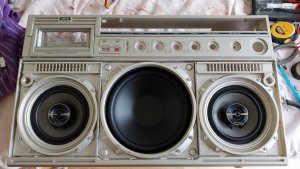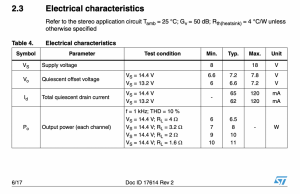Hi all,
Newb here, based in Ireland. I just purchased a Philips D8444 and am in the process of restoring/upgrading it. After cracking it open (and evicting two rather large and somewhat disgruntled spiders), I'm getting to grips with speaker replacement. From everything I've read here, the original speakers are weak as a newborn kitten, so upgrading makes a lot of sense. So, here's what I'm going with:
The amp output in the D8444 has two channels - R+/- and L+/-. And I have no idea how to wire the speakers in series when there are two channels. Do I:
PS: a mate is 3D printing me a copy of the infamous cassette gear! Happy days.
Newb here, based in Ireland. I just purchased a Philips D8444 and am in the process of restoring/upgrading it. After cracking it open (and evicting two rather large and somewhat disgruntled spiders), I'm getting to grips with speaker replacement. From everything I've read here, the original speakers are weak as a newborn kitten, so upgrading makes a lot of sense. So, here's what I'm going with:
- 2 x Pioneer TS-G520 2-way car speakers (4 ohm) (see https://www.halfords.ie/technology/.../pioneer-ts-g520-coaxial-speakers-689340.html) which should remove the need for the piezo tweeters
- 1 x GRS 8SW-4 Subwoofer (4 ohm) (see https://www.soundimports.eu/en/grs-8sw-4.html)
The amp output in the D8444 has two channels - R+/- and L+/-. And I have no idea how to wire the speakers in series when there are two channels. Do I:
- Wire R+ to the pos terminal of the R speaker, and L- to the neg terminal of the L speaker, and link the two remaining speaker terminals to each other, OR
- Just run both speakers through a single channel, OR
- Just rig 'em up like the original 8 ohm speakers, and take my chances that I won't blow up the amp?
PS: a mate is 3D printing me a copy of the infamous cassette gear! Happy days.







